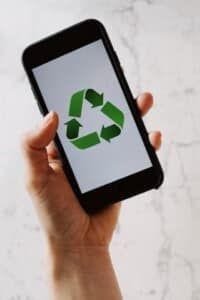How To Make Your Marketing More Eco-Friendly

Print advertising is a great way to get people to notice your brand. But since climate change is on everyone’s mind, it’s essential to think about how green your printed marketing is. It might be that, in order to
be more eco-friendly
, you need to consider other marketing methods that will help you. Read on for some ideas about what you might want to start implementing in your business.
Think About Your Promotional Products
Many types of marketing, from event giveaways to promotional mail-outs, rely heavily on promotional materials. Many promotional goods, however, are still manufactured exclusively from disposable plastics.
The good news is that promotional product manufacturers have expanded their product lines to provide a wide variety of environmentally friendly branded item options. Sustainable promotional products like these are great for increasing brand awareness and generating repeat business because customers will keep them in use. Some examples include reusable coffee cups and water bottles, tote bags, and cotton-based notebooks.
Buy More Recycled Products
You should only buy products made from recycled materials, such as plastic or paper. Buying recycled goods is a great way to do your part in the fight against waste. Plus, you’ll save energy and materials by reducing the production of new products.
How does this help with your marketing? It’s a great USP to use in your promotional information. Let your potential clients and customers know that you take sustainability seriously, and when you’re coming up with a sales pitch with help from the Salesforce Playbook , this USP should be front and center in everything you say and do.
Sell Green Products
Companies who already manufacture environmentally friendly goods have a leg up on the competition. If this is not the case, then developing a “green” variant of an existing product, adding an existing green product from another source, or developing an entirely new green product would be the most sensible way to break into the eco-friendly market. Products are considered “green” if they are made from sustainable, ethically sourced components.
It’s helpful to see what other companies are doing for ideas on how to implement eco-friendly practices during the manufacturing process. A product’s environmental friendliness can be attained through its packaging, manufacturing, and advertising.
Use Eco-Friendly Packaging
Over half of consumers would be willing to pay more for environmentally friendly packaging, and most consumers are already making an effort to decrease their plastic waste. The problem with “regular” packaging is that plastics tend to wind up in landfills or the ocean, and their production process can be hazardous to the environment.
In addition to boosting your company’s green credentials , making the switch to biodegradable and sustainable packaging is safe, healthy, and beneficial to individuals at every stage of the packaging’s life cycle.
Use eCommerce
If there’s one thing we learned in the past couple of years, it’s that you need to have a web presence for your company.
You might start selling your wares online if you have a physical store, or you could move some of your events online if you host them in person. This will not only help you reach more customers, but it will also lessen the environmental toll of your company by decreasing the number of trips customers need to make to your location.
Make something of this shift in your advertising, and people will respond positively to it.


